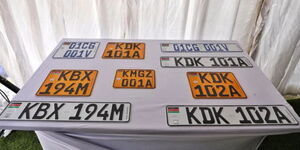Transit trucks and shipping containers which are commonly used in transporting goods for long distances are mostly made of corrugated steel sheets that are in wavy patterns.
Contrasted to lorries - whose walls are straight steel sheets - trucks often have corrugated steeled walls that resemble iron sheets used in roofing houses.
Unknown to many, the design that dates back to 1920s serves a special purpose in the trucks given their role in the transportation of mostly heavy goods from one place to another.
In most cases, truck manufacturers prefer using patterned steel when making side walls of transit trucks because of its durability.
Given the number of risks involved in long-distance driving such as accidents, corrugated steel is dent-resistant and is preferred as it ensures that goods stored inside the trucks are safely protected in such events.
That could explain why there is minimal damage to goods transported by long-distance trucks.
"The wave pattern allows it even more resistance to all kinds of impact and weight loads. Corrugated steel sheets have the highest strength-to-weight ratio than almost any other construction material," Porta-Stor, a global container dealer explained.
On the other hand, transit trucks cover thousands of kilometres daily when in transit and they encounter different kinds of weather. Corrugated steel is preferred in such a case because of its resistance to weather-related destructions such as rust.
This is, mainly, the reason why they are preferred for shipping goods across the seas.
"There is no organic material found in this metal, making it more resistant to mold and rust, thus adding to its durability.
"This design of steel sheets is resistant to hail and other weather damage that frequently destroys other metals. Due to the wave within the panels, it’s resistant to buckling under the weight, warping with weather and use," the container dealer company explained.
Another reason the material and pattern are preferred is the fact that they require little maintenance. For example, in the case that dents have resulted from accidents, the dents can often be straightened back to normal shape.
Given their durability and other factors, construction experts and builders, therefore, prefer to use them in the construction of container houses.
In other cases, because of its strength, one can also build a storey building by piling one container on top of the other. This trend had become popular for those constructing shops.












